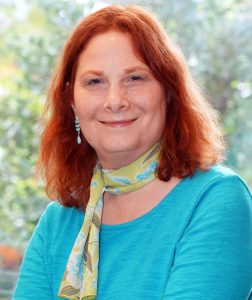NIH doctor to give Hussain lecture on connecting body, mind and spirit to heal
October 23rd, 2018 by Tyrel LinkhornIt’s only recently in the great history of medicine that a disease could genuinely be cured. Hippocrates practiced 2,500 years ago, but simple antibacterial drugs that could knock out illnesses like pneumonia or strep throat weren’t widely available until the late 1940s.
With cures elusive, the focus of physicians was doing what they could to make the patient whole. That mission is still important today, said Dr. Ann Berger, chief of Pain and Palliative Care at the National Institutes of Health Clinical Center who is speaking at The University of Toledo this week.
“In medicine there can be healing or curing. Most illnesses at this point in time we are not actually curing,” Berger said. “But what we can do in medicine is help people heal. The common thread of healing is putting together mind, body and spirit. Even when we do cure patients, trying to help the person reach psychosocial spiritual healing is extremely important and desired by the patient.”
Berger will discuss the theory and history of healing in a lecture titled “The Importance of Psychosocial Spiritual Healing in Healthcare” as the featured speaker Thursday, Oct. 25, at the 10th annual S. Amjad Hussain Visiting Lecture in the History of Medicine and Surgery at UT.

Dr. Ann Berger, chief of Pain and Palliative Care at the National Institutes of Health Clinical Center.
The lecture, which begins at 5 p.m. in Collier Building Room 1000 on UT’s Health Science Campus, is free and open to the public.
A 1988 graduate of the Medical College of Ohio, Berger helped shape the field of palliative care. She lectures nationally and internationally and has published extensively in the field. Berger also edited the first textbook on palliative care and supportive oncology in the country.
She has been chief of Pain and Palliative Care at the NIH Clinical Center since 2000.
Berger said there is a long string running throughout the history of healing medicine that link the same ideas of connecting the mind, body and spirit.
“If you go through all the world’s different cultures, from traditional Chinese medicine to Native American medicine, you see this,” Berger said. “We’ll not only talk about how different cultures thought about healing, but we’ll also discuss what we can do as health-care professionals and how healing occurs by doing something intentionally.”
The S. Amjad Hussain Visiting Lecture in the History of Medicine and Surgery was created in honor of Dr. Hussain, professor emeritus of cardiovascular surgery and humanities, a former member of the UT Board of Trustees and columnist for The Blade.
“She is a graduate of our medical school and has made a name for herself in palliative care, which has become a well-recognized specialty in the practice of medicine,” Hussain said. “To bring in someone who is the head of a federal agency in charge of this particular specialty is great for us at The University of Toledo.”
RSVPs are requested; email hscevents@utoledo.edu or call 419.383.6300.
Tyrel Linkhorn is
Tyrel Linkhorn is UT's Media Relations Specialist. Contact him at 419.530.5549 or tyrel.linkhorn@utoledo.edu.
Email this author | All posts by
Tyrel Linkhorn

